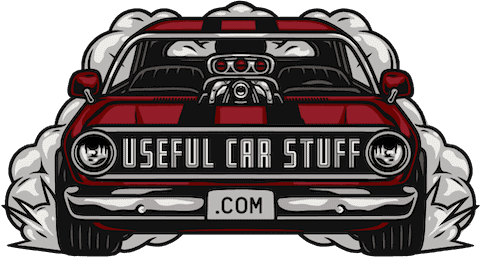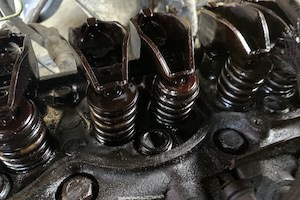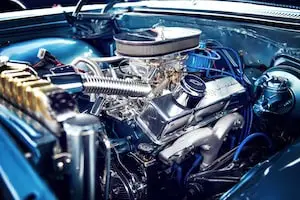Most of us travel in our cars every day. Since we spend time in them and rely on them so frequently we should have a better understanding of the engine. These are the most misunderstood things about car engines:
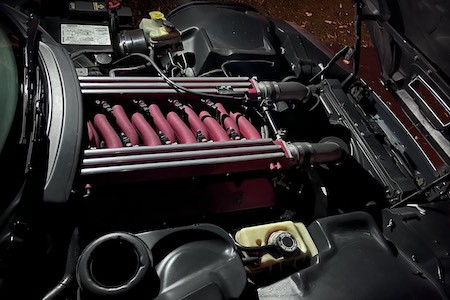
1. Engine Oil Weights and why Oil Must be Changed
W stands for winter not weight in oil.
Many do not know how to read engine oil weight numbers. Engine oil is classified by “weight” indicating it’s thickness in different environments.
Engine oil weight numbers are best explained with an example.
5W-30 is one of the most common engine oils.
The numbers indicate how thick the oil is. The higher the number, the thicker the oil.
The first number, before the W, is the thickness of the oil at cold temperatures. So down to freezing temperatures, the oil will flow like a 5 weight oil at startup
Then second number, after the W, is the thickness of the oil at hot temperatures. So after the engine is warm, at about 200 degrees Fahrenheit the oil will flow like a 30 weight oil.
Take a look at this article written about comparing oil weights and how to know when you can use which weight oil.
Valvoline wrote the article and who better to explain to you in further detail about which oil weights you can use than the people that make the oil!
Most car owners do not understand WHY engine oil must be changed. By understanding why it has to be changed, more people will certainly take oil changes more seriously and ensure they have them done on time.
Oil needs to be changed because it picks up contaminates inside the engine. If left unchanged, more and more contaminates accumulate in the oil and the oil breaks down becoming a gooey mess and will no longer be able to lubricate the engine properly. Eventually the engine will wear down and fail without an oil change.
Pro Tip: To keep track of when to change the oil, write the mileage on a sticky note on the windshield the last time the oil change was done.
Personally I prefer to keep an eye on the engine oil when I check the level of the oil with the dipstick. I try to check the oil level every other gas fill-up just to keep an eye on the oil level and at the same time pay attention to the color of the oil. Once the oil looks dark, I change it.
The shelf life of oil is actually highly controversial! I mean why would engine oil go bad just sitting in a sealed container? But oil manufacturers put an expiration date on it.
Read my article all about motor oil shelf life to know how long you can keep engine oil stored.
One more thing!
I have found some places on the internet that say synthetic oil is completely man-made. Synthetic oil is not completely man-made. It is derived from a natural crude oil base and synthetic (man-made) additives are put in to alter the characteristics and improve the life of the oil.
2. Engines Move Extremely Fast
We take for granted and may not realize how fast our car engines are operating and what an engineering feat the combustion engine is. Most cars idle at about 750 rpm (Rotations Per Minute) and cruise on the freeway at about 3,500 rpm. Using 3,000 rpm as an example for quick math, we will cover how fast engines really are moving.
If the engine is spinning at 3,000 rpms, then it is rotating 3,000 times in one minute.
3,000 times in one minute is equivalent to 50 times in one second!
Engines often rev all the way to 6,000 rpm when you accelerate quickly, so they can be spinning up to 100 rotations in one single second.
That is FAST!
Think of the number of rotations each bearing in the engine has to be able to endure over the life of the engine. Think of the timing that the ignition system has to spark each of the cylinders at exactly the right moment 100 times in a second. Think of the amount of heat that must generate moving that fast!
Driving Fast is Bad for the Engine
Because of this understanding that engines spin very fast when driving fast, there is a misconseption that accelerating quickly is bad for the engine and will wear it out.
Driving fast is bad for your car since it will wear more on the engine than driving slow. Driving fast for a long period of time will heat up the engine much hotter than it normally runs which is when the most wear occurs to the engine. At hotter temperatures, metal expands more and more of the components are literally worn down.
With this in mind, accelerating fast is not necessarily bad for your car or driving fast for brief periods of time.
The key defining factor here is the word “fast”.
Running the engine “fast” does indeed cause more wear to the engine.
Driving fast as in over 100 mph frequently will result in a shorter lifespan for your car engine. Driving this fast means more wear on all the components of the engine.
Driving fast as in quickly getting to the speed limit in a 45 mph speed limit zone is not bad for your vehicle. Accelerating quickly can allow your car to operate in it’s “sweet spot” and run most efficiently resulting in the most life out of the engine.
Driving aggressively enough to open up the throttle and run the engine at higher rpms can be good for the engine to circulate oil and keep fuel, oil, and coolant passageways clean and clear, but always stomping on the pedal like you have a lead foot can be bad for the life of the engine.
3. What You Can Do to Improve the Fuel Economy of your Car
Better MPG with Steady Acceleration
Many are consider gas to be consumed quickly by a car idling but the amount of gas spent idling is almost negligible. Some believe they are using up their gas while the car sits and idles, but in reality the car uses little to no gas while sitting.
The majority of fuel wasted is when the throttle is wide open. The fast starts and stomping on the gas pedal is when most of the fuel is used up.
Quit worrying about using up your gas while it idles. By not driving with a lead foot (accelerating quickly) you will save much more gas than turning your car on and off to avoid idling for a long time.
When your foot is off the gas and the car is coasting, very little gas is consumed. Only a trickle to keep the car running. The same as at idle.
Accelerating slowly is the biggest mpg factor you control
Since steady acceleration and unnecessary movement of the throttle will dump fuel into the engine burned up, using cruise control keeps the throttle steady and improves mpg
Turbocharged Does Not Necessarily Mean Better Gas Mileage
Turbocharging an engine allows you to reduce the size of the engine to achieve the same power thereby reducing the amount of fuel consumed. Simply altering an engine by adding a turbo will not definitely increase the fuel economy of the car but rather will be slightly better, the same, or even decrease.
The benefit of using a turbo charger is that a smaller engine can be used to produce the same amount of power as a larger engine just with the addition of the turbo. This is because of the added air intake capability from the turbo. When a smaller engine is used, the fuel economy often improves.
We see many more modern cars using turbo charged 4 cylinder engines that produce good power and even better fuel economy because the engines are small, light, and efficient.
A turbo charger added produces more power but does not improve mileage. May even reduce because pushing more air so more fuel is required. When more air and more fuel are used, gas mileage decreases! Turbo chargers do increase an engines efficiency so an engine that is optimized by adding a turbo can see a boost in mileage.
There are mileage and efficiency benefits of using a turbo charger, they are just not as great as people think.
Car and Driver did a test on the effect of a turbo in different vehicles on gas mileage and found mixed results. In some cars it increased gas mileage and in others it decreased.
4. Oil Change is the Number 1 thing to Prolong Engine Life
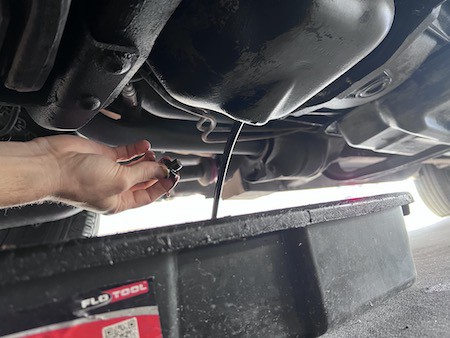
Changing the oil prolongs the life of the engine.
Many do not understand why oil gets dirty.
Oil gets dirty primarily from the burning that happens in the cylinders. Oil surrounds the pistons that combust with fuel and air just on the other side of the piston rings. Some oil gets burned on the cylinder walls and can also pick up some of the burned fuel. The oil also becomes black from use lubricating metal on metal wear and picks up any of the bits of metal that is worn away.
Oil may become dirty faster in older cars due to carbon buildup that has developed inside the engine from dirty oil and use of the engine.
An engine flush may be helpful in removing some of the buildup and reduce the amount of time it will take for the oil to dirty. Frequent oil changes will reduce the carbon buildup in the future and keep the engine cleaner.
Engine oil should be changed every 3,000 miles. That is what almost all car manufacturers recommend. For the longest possible engine life, change the oil this often. To save some money, buying synthetic oil has some additives that allow the oil to lubricate better and extend the life of the oil.
Many synthetic oils advertise something more like a 10,000 mile oil change. This is what they advertise but it is a bad idea. Change your oil at the 7,000 mile mark at the latest. And if you are extra worried about it, check the oil dipstick periodically and whenever the oil is looking extra dark, change it!
5. Carburetor vs Fuel Injected
EFI is proudly plastered on the side of some cars and cars beginning in the 80’s proudly had emblems that said “Fuel Injected” but EFI just stands for electronically fuel injected.
This means simply that the fuel is injected into the engine and is regulated electronically.
Electronically as opposed to mechanically.
This is the reason that cars that are fuel injected have a computer. This is called the Electronic Control Module (ECM).
To learn more about a cars’ computer, feel free to check out Popular Mechanic’s article all about the car’s computer system and how it works.
A mechanical fuel injection system is with the use of a carburetor. A carburetor is purely mechanical Most do not understand what that means
A Bigger Carb is not always Better
While I am on the topic of carburetors, a small misconception with carburetors is that bigger is better! Bigger is better in a lot of instances but not always with the carb.
The carb size should be calculated according to the size of the engine. The size of the engine determines the amount of air that is able to fit and so carburetors are rated on the amount of air that can flow through them. This rating is in cubic feet per minute (CFM).
The reasons more is not always better is Less cfm more responsive if the engine isn’t big enough for a larger cfm
6. Engines Have a Lifespan
Engines have a predetermined and estimated lifespan that is certainly not advertised loudly by the manufacturer. A car engine consists of many moving parts and it is a matter of time before one or more of them wear out and the engine has reached its end.
Not all engines are created equal. Some have been engineered with better designs. Some have been built with higher quality components. It is important to do your research when buying a car to estimate the lifespan of the engine with proper maintenance.
Check out our article on proper car maintenance to prolong the life of your vehicle including the vehicle’s engine.
All engines have rubber components that must be replaced as the vehicle ages. Driving an old vehicle does not make it unreliable as long as old rubber is replaced. This includes radiator hoses, vacuum hoses, fuel lines, power steering lines, etc.
Most people decide that if they have a car that has gone 120k miles and the head gasket goes bad well then they have a terrible car. This simply is not true.
The gasket should be replaced and the car can continue to operate reliably for a very long time. These sorts of expenses become difficult to justify keeping an old car since it is so costly which is the perfect reason to check out the rest of the content here where we discuss proper vehicle maintenance to save you thousands of dollars per year on your car.
There are many maintenance jobs that are required on all cars and can be done will little or even no experience.
Stick around and learn just how to care for your car!
There are many components to complicated cars that wear out and require replacing. Doing simple things like replacing an alternator before it goes bad as well as old rubber hoses and most importantly replacing old fluids.
There are some things that DO make a car a bad car.
Expensive repairs that are common among all the cars of the same model are cars with a short lifespan.
A car may also be a bad car for you simply because it is expensive to maintain and repair.
To see which cars are the most expensive and cheapest to maintain check out Your Mechanic. Your Mechanic has a huge database of car data and they gathered their data on cars they’ve worked on to determined how much money per year car owners spend on their car by brand.
To sum it up, the 5 most expensive car brands to maintain are:
- BMW 2. Mercedes Benz 3. Cadillac 4. Volvo 5. Audi
The 5 least expensive car brands to maintain are:
- Toyota 2. Scion 3. Lexus 4. Honda 5. Mitsubishi
Read the report in detail at Your Mechanic.
7. Bigger Engine is not always Faster
A car with a bigger engine does not mean it is faster than a car with a smaller engine.
Along the same lines, more cubic inches does not necessarily mean more power. Often the answer is more displacement but not always.
Displacement being more volume in the engine cylinders.
There is no replacement for displacement.
As the saying goes
But this is not always the case. Engines are not created equally and just because one engine is bigger than the other does not mean that it will produce more power or be better for the car. Of course with an engine being made bigger, the idea is more power but some are optimized differently.
For an example, the Mopar 340 cubic inch engine vs the Mopar 360 cubic inch engine
Mopar was a name Chrysler began using on their pars in the 70’s, stands for Motor Parts and today is the umbrella name for Chrysler, Jeep, Dodge, Ram, and Fiat.
340 cubic inch vs 360 cubic inch Chrysler Engine
The 340 has established itself a name and reputation for being a performance Mopar engine. The 340 was factory in old muscle cars with awesome add-ons like lightweight intakes and the six-pack carb setup.
But both bear bones, the 340 has a shorter stroke and higher compression and allows for it to be a higher revving motor than the 360. This results in more power and for that reason is highly sought after and was preferred to the 360.
Perfect example of a bigger motor does not always mean more power.
8. Fuel Misconceptions
The common idea that the common people have is that fuel alone enters the engine and combusts magically propelling forward the car.
But we are not common people.
They do not realize the precise mechanisms involved perfectly mixing fuel and air to enter the engine. But we do.
Gas or diesel or jet fuel or whatever the car is using is mixed with air. Really we should call this “fuel” but most people default to calling the gas “fuel” since fuel can be used to describe gas or diesel or jet fuel.
The fuel and air are mixed.
This mixing is done by the carburetor or the fuel injection system which was mentioned earlier here. I should mention that I have another simple post that can help you to understand further the difference between carburetion and fuel injection and how to tell by looking. Go read it if you would like to know a bit more about it!
If the fuel and air are mixed, well that means that the fuel has now vaporized and enters into the engine as a vapor.
If it injected, it is dispersed as best as possible to result in mixture with the air just the same and even combustion.
Regular vs Premium Gas
What gas should I put in my car, regular or premium?
Just put whatever gas your car manufacturer recommends. Don’t deviate from that and the engine will run optimally.
Modern gas is unleaded and has been that way since the 70’s. In fact leaded gas was phased out completely in 1996.
The difference between regular and premium gas is regular unleaded gas has an octane rating of 87. Premium unleaded gas has an octane rating of 90. The higher the rating, the greater the capability of the gas against compression and higher detonation resistance.
The rating indicates how the fuel reacts similarly to certain octane isomers and does not mean those are the only chemicals in the fuel. Rather there are many additives and other hydrocarbons in modern gasoline.
9. How a Clutch Works
A common misconception is how the clutch works. The common picture in mind is the clutch is a giant gear and sort of meshes together with gears from the engine.
The clutch is not two gears meshing together it is more like a disc brake type of contact between the engine and transmission.
The clutch is a stack of plates that are able to rotate past one another, but have a level of friction to them. When enough pressure is exerted on the plates, they do not slide past each other but move together.
Pressing the clutch pedal downward pulls the clutch plates away from the flywheel (or pressure plate – same thing basically) which is the part of the engine that links to the transmission.
This can be a huge help actually when learning to drive a manual transmission car actually because once the person learning to drive knows that when they press the clutch pedal to the floor that they are literally moving the transmission back away from contact with the engine, they will know how to operate the clutch pedal better.
Bottom line is, the clutch is not a bunch of gears meshing together. It is a flat plate.
10. Check Engine Light Flashing Means STOP
When the check engine light is flashing, it is trying to get your attention! Unfortunately I have heard too many tales of people continuing to drive their car after the light began to flash and then BOOM, their car was dead.
Even if it is to drive directly to the mechanic shop, it is not a good idea to continue to drive if the check engine light begins to flash.
A Check engine light flashing indicates a severe problem.
What should I do if the check engine light is flashing?
- Pull over off of the road to a safe place to stop as soon as possible.
- Call a tow truck and have your car towed to a mechanic shop to be diagnosed.
With a simple diagnostics tool the mechanic will be able to read the computer that is indicating an error causing the check engine light to flash.
What does it mean when the check engine light is on solid and not flashing?
When the check engine light stays illuminated and does not flash it means that you should use a diagnostics tool to read basically what the car is trying to tell you. Take your car in to Autozone, Oreilly’s or your local auto mechanic to diagnose the issue.
An illuminated check engine light can indicate a part that is not working properly and needs to be replaced, or it can indicate something as simple as your car needs more windshield wiper fluid.
Because the light can be an indicator of something urgent such as low Antifreeze, it is important to take your car in to check the diagnosis right away.
Sometimes I wish that the computer in the car would just have a voice and a personality and would just speak to you explaining what is wrong with the car. And how to fix it of course. Probably we will get there someday!
A diagnostic tool can be expensive but is SO handy to have since now-a-days so many cars have complex computer systems often with hundreds of sensors per car.
If you have it in mind to have a tool to diagnose your car yourself and find it a pain to go to a mechanic or Autozone for them to tell you that your car needs coolant, then purchase a diagnostics tool for yourself.
Go to my recommended tools page to see the diagnostic tool that I recommend along with my review of the tool.
Another majorly misunderstood thing about check engine lights is that many do not realize that a check engine light can be diagnosed for free at an Autzone, Oreilly’s as well as other auto parts stores.
11. Engine Needs to Warm Up
There are some that insist their car needs to warm up for several minutes before it is ready to drive. And there are others that insist that is a thing of the past. So which is it? Does your car have to warm up or is it ready to go as soon as it is started?
Modern fuel injection cars regulate the amount of fuel entering the engine at a cold startup so that they are ready to drive as soon as they are on. But.. should be allowed to warm up when extra cold for about 30 seconds.
This 30 second warm-up is far from the 5 minute startup that USED TO be required of cars.
Warming up a car started in the cold for several minutes used to be a “must do” simply because that was during a time when cars were carbureted using a mechanical system for fuel delivery.
So, for those vehicles still equipped with a carburetor, a longer warm-up time is still required. At least 1 minute and up to 5 minutes if in extreme cold weather.
The benefit of the 30 second warm-up is to allow engine oil to circulate, and the engine at least begin to warm up.
Of course the obvious benefit of allowing your car to warm up when it is cold outside is that your car gets warm! And that warms you up.
Certainly running your car for a few minutes when it is cold out does not cause any extra damage other than using up a tiny bit of fuel. Especially with the feature of remote starts, it is a no-brainer to run your car so it is nice and toasty when it is snowing outside.
Warming up the car does not mean to just let it sit and idle for a long time as well. Warming up the car means bringing it up to operating temperature gradually. So by avoiding stomping on the gas pedal for the first few minutes of driving, you avoid excess wear on all the internal components of the engine.
Just drive it for a minute before doing the burnout is all I mean to recommend.
12. The 3 Keys for an Engine to Run
This is a concept that should be understood by all and is in reality understood by few. This can be helpful when trying to figure out why your car won’t start on that rare occasion. It happens to all of us, we just need to understand this key concept to be able to diagnose the car issue.
FUEL. SPARK. COMPRESSION
These are the 3 keys for an engine to run.
Fuel
Fuel must get from the fuel tank to inside the engine. There are a number of places this can get stopped.
Old fuel lines can crack and leak out the fuel. Mechanical or electrical fuel pumps can fail. Fuel filters can get plugged. Fuel pump fuses can pop.
Knowing that fuel is getting into the engine is done by simply removing the air intake and looking into the throttle body when someone steps on the gas.
Spark
Spark is generated at each spark plug, one for each cylinder. The spark is timed to ignite precisely and ignites the fuel in the cylinder at just the right moment. Spark is generated from energy stored in the battery and by the alternator.
There is a wide selection of things that can go wrong to prevent spark. The most common is a worn out spark plug. Next is a bad ground or other poor connection.
There are tools to test for spark that you can plug a sparkplug into and see if it lights a bulb, or simply remove the plug, plug it into the boot and touch the end of the plug to a good ground. When you try to start the engine you should be able to see the spark.
Spark is the second thing to check for when diagnosing an engine that won’t run. If you have spark you can cross battery or other ignition issues off the list.
Compression
Compression is the pressure created by the movement of the piston in the cylinder. The piston pulls air into the cylinder then pressurises the cylinder compressing the air. Compression can be lost from worn out valves or piston rings or a damaged block or cylinder. Compression is the third and final key to a running engine.
When determining if an old engine is still any good, a quick test you can do is check for compression. There are simple compression checkers that will tell you the amount of pressure that each cylinder is making and you can check out the one I like in the recommended tools section of this site.
A bit more than you bargained for probably, but just a quick explanation of what the compression ratio is in an engine:
The compression ratio is the amount of volume in a cylinder at maximum capacity divided by the amount of volume in a cylinder when it is fully compressed, or at a minimum volume.
A typical compression ratio is between 8:1 and 11:1. Generally any engine with a compression ratio over 10:1 should use premium gasoline.
13. Steps of Engine Combustion
How the internal combustion engine works is not understood by 80 percent of car owners.
There is so much to explaining how an engine works that it is tough to sum up, but the first bit to explain are the 4 cycles (or strokes) of a car engine.
Now a four stroke engine as opposed to 2 stroke engines.
2 stroke engines are preferred over 4 strokes in cases where a small, simply, lightweight motor is needed. 2 stroke engines are less complicated, easier to maintain and repair, are lighter in weight,
2 stroke engines are preferred in things such as weed-whackers, lawn mowers, jet skis, some boats, and dirt bikes are still made with 2 stroke and 4 stroke engines.
Car engines are 4 stroke engines. The 4 strokes of a car engine are:
- Intake
- Compression
- Combustion
- Exhaust
The intake stroke, the piston moves down, pulling air into the cylinder through the open valves.
The compression stroke, the piston pushes the air up with the cylinder valves closed compressing the air.
The combustion stroke, the spark plug ignites and forces the piston down and around turning the motor.
The Exhaust stroke, the piston comes back up pushing the combusted air out the open valves.
Since it is so very difficult to cover all of the components of an engine, check out my other article with easy to understand explanations and photos explaining the basic components of the engine.
Or you may be interested in learning more of how all of the other components of a car work in conjunction with an engine.
Conclusion
The 13 Most Misunderstood things about a car engine are:
- Engine Oil Weights and Why Oil Must be Changed
- Engines Move Extremely Fast
- What You Can Do to Improve the Fuel Economy of Your Car
- Oil Change is the Number 1 Thing to Prolong Engine Life
- Carburetor vs. Fuel Injected
- Engines have a Lifespan
- Bigger Engine is not always Faster
- Fuel Misconceptions
- How a Clutch Works
- Check Engine Light Flashing Means STOP
- Engine Needs to Warm Up
- The 3 Keys for an Engine to Run
- Steps of Engine Combustion
